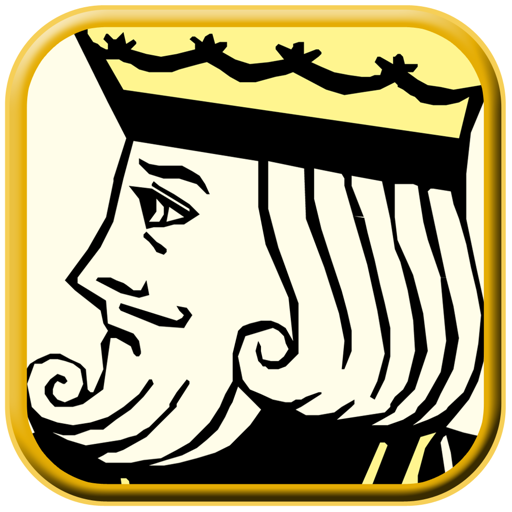Free
⭐️4 / 5
Rating
🙌2
Ratings
📼6 scs
Content
📦w/o updates
Updates frequency
🗣❌ unsupported
Your locale
- Versions
- Price History
- Description
- FAQ
All Versions of ChuHe HanJie Chess
2.1.2
November 12, 2023
Performance optimization
2.1.1
November 3, 2023
Bug fixes, performance optimizations
1.2
August 6, 2023
fixed bugs.
1.1
August 4, 2023
fixed bugs.
1.0.4
June 27, 2022
修复错误,性能优化
1.0.3
October 27, 2021
Fixed bugs.
1.0.1
February 5, 2021
Fixed bugs.
1.0
January 20, 2021
Price History of ChuHe HanJie Chess
Description of ChuHe HanJie Chess
The Chu River Han boundary is the dividing line in the chess board, derived from the Chu-Han War. From the format of the chessboard, the two sides of the Chu River Han boundary are nine straight lines and five horizontal lines. Nine, the largest in numbers, five, in the middle of the number, vertical nine horizontal five combined to form the "Nine Five" Supreme, which is the highest and the largest and broadest, representing the imperial throne. After the chess pieces were placed on both sides, the black and red confrontation and competition formed just artistically reproduced the historical scene of Chu and Han fighting for the world. Abstracted into a chess game, the traditional board puzzle game has a long history, belongs to a kind of two-player confrontation game, because of the simple equipment, strong fun, has become a very popular chess activity. Chinese chess is Chinese chess culture and a cultural treasure of the Chinese nation.
Chess records
Current notation generally uses four characters to record the movement of a chess piece.
The first word indicates the piece that needs to be moved.
The second character indicates the straight line code in which the moving piece is located (both red and black squares are counted from right to left by their own bottom line), red square is represented by Chinese characters, and black square is represented by Arabic numerals. When there are two identical pieces on the same line, the difference between front and back is used, such as "rear car flat four" and "front horse into 7".
The third character indicates the direction in which the chess piece moves, using "flat" for horizontal walking, "forward" for advancing towards the opponent's bottom line, and "retreating" for retreating towards one's own bottom line.
The fourth word is divided into two categories: when the pawn advances or retreats in a straight line, it indicates the number of moves the pawn advances and retreats; When a piece is drawn flat or diagonal, it indicates the number of the line reached.
Basic Law
Shuai (將): Shuai (將) is the leader of chess and is the target that both sides strive for. It can only move within the nine houses, up or down, left or right, and can only walk one block according to the vertical or horizontal line each time. The handsome and the general cannot be directly opposite in the same straight line, otherwise the walking side will be judged negative.
Shi (士): Shi (士) is the personal bodyguard of the general (shuai), and it can only walk around the Nine Palaces. Its chess path is only four diagonal lines in the nine houses.
Phase (image): The main role of phase (elephant) is to defend and protect one's handsome (general). Its way of walking is to walk diagonally two blocks at a time, commonly known as "elephant flying field". The scope of activity of the phase (elephant) is limited to the local position within the river boundary, and cannot cross the river, and if there is a chess piece in the center of the field character it is walking, it cannot walk, commonly known as "plug elephant eye".
Rook: Rook is the most powerful in chess, regardless of horizontal or vertical lines, as long as there is no child obstruction, the number of moves is not limited. Therefore, one car can control seventeen points, so it is known as "one car and ten children".
Cannon: When the cannon does not eat seeds, it moves exactly the same as the car. When eating a piece, there must be 1 piece between the opponent's piece (regardless of the opponent or your own piece), and the cannon is the only chess piece in Xiangqi that can cross the piece.
Show less
ChuHe HanJie Chess: FAQ
Yes, ChuHe HanJie Chess has support for iPad devices.
The ChuHe HanJie Chess app was launched by Juan Du.
The ChuHe HanJie Chess app requires iOS 12.0 or later.
Users have given ChuHe HanJie Chess a so-so rating of 4.0 out of 5.
The Main Genre Of The Chuhe Hanjie Chess App Is Games.
2.1.2 is the most recent version of the ChuHe HanJie Chess app.
The last update for ChuHe HanJie Chess was on July 5, 2024.
ChuHe HanJie Chess was first released on February 6, 2023.
This app is appropriate for all ages, with no offensive or inappropriate content.
ChuHe HanJie Chess is available in English.
Unfortunately, ChuHe HanJie Chess is not on Apple Arcade.
No, ChuHe HanJie Chess does not allow for in-app purchases.
No, you cannot use ChuHe HanJie Chess with Apple Vision Pro.
























